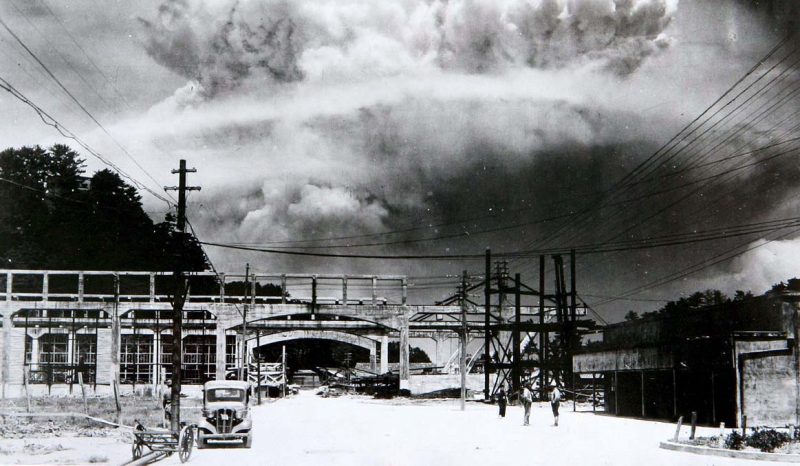Milton Dienes could not have realized that his pictures would one day head to the archives at the Library of Congress. He walked the streets of Nagasaki taking photographs, three months after the atomic bomb was dropped in 1945.
He was a member of the Army Air Corps’ 9th Photographic Technical Unit sent to the port city to document the destruction with his pictures. Not surprisingly, since tens of thousands of people died instantly and tens of thousands more would succumb to radiation sickness, the streets were largely empty.
The city was mostly made up of buildings and factories, he explained. There were few people to photograph which was a blessing since their grief would have been difficult to witness.
Many of the homes, some made of sheet metal, blew away. Cement buildings seem to have liquefied and melted together to resemble a glass surface, a result of the blast’s intense heat, he recalled.
In addition to taking and developing their photographs, unit members also developed the pictures taken by pilots of the B-29 Superfortress as the atomic bombs detonated first over Hiroshima, then over Nagasaki three days later.
The photo lab for developing film was in Guam in a structure that resembled a shack. It was archaic even at the best of times, Dienes said. Since developing film negatives require cool temperatures, not the habitual 80 degrees of the island, an icemaker was kept in the lab to make four tons of ice daily to generate the correct conditions to develop almost 14,000 images in total.
Dienes and his team returned to Guam to produce hundreds of photographs that have never been published, only seen by the military until now. He has all the stories that go with the photographs, he said.
Two months ago he got a telephone call from Colonel Diane Hickey, the commander in Dayton, Ohio, of the 14th Intelligence Squadron. She had been trying to locate Dienes for a considerable time, eventually finding him online.
The Intelligence Squadron acquired the stock of the 9th Photo Technical Unit but had virtually no background of its presence.
They had no information of any kind as to what they did there, said Dienes. Not only that, they had no photos. They didn’t know what the 9th did or how they accomplished it.
Hickey found two needles in a haystack in locating Dienes and another veteran, John “Jerry” Johnson from Mercer, Pa. They were the only pair out of the more than 100 original members of the photo-technical unit.
She invited them to spend a long weekend late in September in Dayton, hopeful she could have them meet the current staff of the Squadron.
They reproduced every one of his photos, about 75 to 100 of them which they never had previously, said Dienes.
He is 92 now, born and raised in North Philadelphia’s Logan neighborhood. Dienes graduated in 1942 and was off to Pennsylvania State University to obtain a pre-med undergraduate degree but was interrupted when a telegram arrived on May 29, 1943, telling him that next morning he was to report for duty.
In August 1943, Dienes was supposed to appear for duty to the 75th Infantry Division in Alabama but a last-minute transfer assigned him to the Air Corps where he used his photographic experience to help structure the photo squadron and train pilots how to operate cameras, philly.com reported.
Despite being in Nagasaki, he never had ill effects due to radiation. He doesn’t glow at night, Dienes joked.
